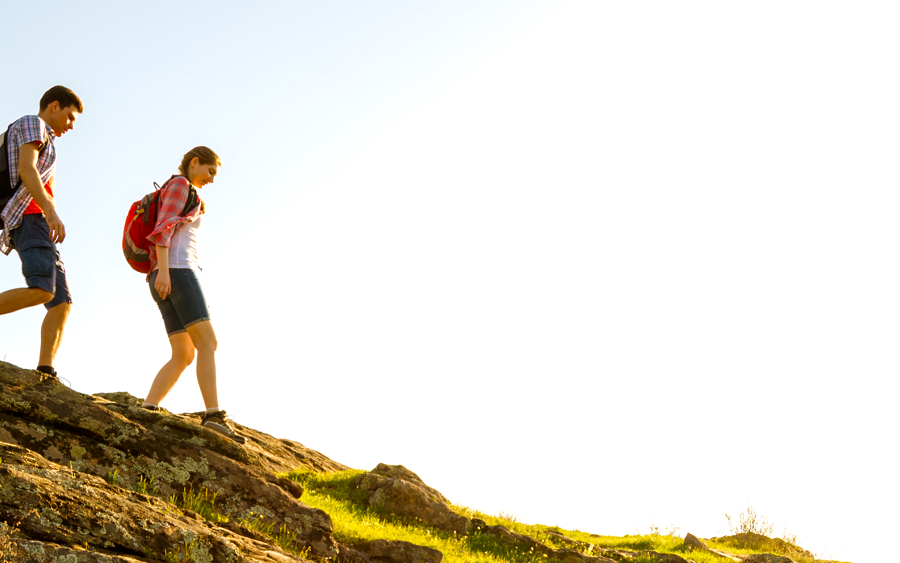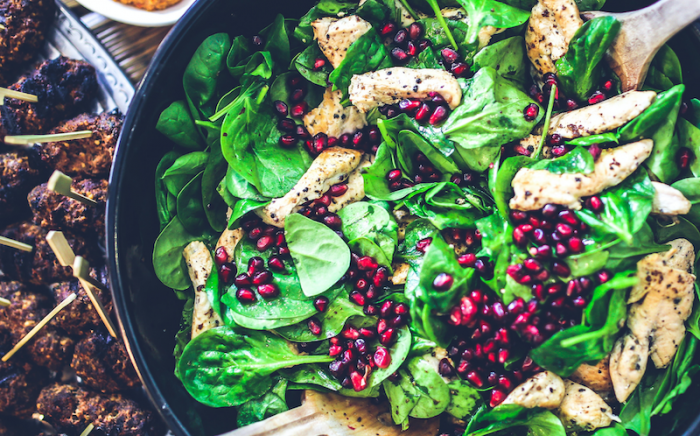Table of Contents
With all the encouragement for outdoor, fresh-air activities, it’s no surprise that nature lovers are getting serious about their hiking hobby in 2021. A successful hike requires more than having fun, however. It’s important to stay prepared when exploring the great outdoors. That’s why we’ve compiled this ultimate hiking checklist.
Read on for everything you should know about what to bring on a hiking trip!

Hydration is Key
Rain or shine, a bottle of water should accompany you on any hike or backpacking trip. Trekking through mother nature can be quite the workout, and even if you don’t feel thirsty, there’s a good chance you’re losing hydration with every step.
The right water bottle is a staple piece of essential hiking gear and can take your hiking game to the next level. Leave single-use plastic in 2020 and get yourself a sturdy, reusable container.
Qualities to look for in your next hiking water bottle should include:
-
Weight – While you want plenty of water, extra weight can make hiking difficult. Search for a bottle made from lightweight material, like hard plastic or single wall stainless steel. This will ensure that—no matter how much water you’re carrying—you won’t feel the extra pounds on your back.
-
Size – An 8 oz bottle simply won’t cut it for a long day of hiking. Choose a container that carries enough water to get you through the entire trail—such as a 21 oz, 32 oz, or even a half gallon jug.
-
Insulation – Warm water gets the job done, but it’s certainly not ideal. Hikers who want the ultimate refresher should look for a water bottle with insulated walls and thermoregulated materials. These characteristics will ensure your liquids are ice cold on even the hottest summer days.
Hiking tip #1: A water bottle with a nozzle will make it easier to sip on-the-go. The last thing any hiker needs is wasted water that they accidentally spilled on themselves. To find your preferred water source and save money in the process, be sure to check out the options on RebateKey.

Don’t Forget the Snacks
Obviously, a four-course meal isn’t a hiking essential, but keeping snacks on hand is important when exercising. As you hike, you’ll burn calories fairly quickly. Even after a big breakfast, hunger can set in while you’re on the hiking trail.
It’s crucial to know how to pack a hiking backpack properly and to bring backpack-friendly snacks every time you hike, such as:
-
Protein bars – Protein bars are perfect for hiking because they’re easy to store, loaded with calories, and provide long-lasting energy for the day ahead. Return energy to your body and return money to your wallet by ordering through RebateKey.
-
Nuts – Nuts are another lightweight food that packs a protein punch. Even a single cup of mixed nuts will provide a whopping 27 grams of protein while you’re on-the-go.
-
Fruit – Fruit is filled with essential vitamins and nutrients that keep you feeling good throughout the day. If you have an insulated lunchbox, fresh fruit can be carried around in your hiking backpack. Dried fruit is also an alternative that doesn’t need to be kept cold.
Hiking tip #2: Bring a small container of peanut butter for an added boost of protein to any hiking snack. Dipping fruit in peanut butter is a quick way to combine essential nutrients—plus they taste great together!
Protect Yourself
The wilderness can be intimidating. While designated trails aren’t typically dangerous—it never hurts to take extra safety precautions when hiking. Keeping yourself protected during a hike may include:
-
Buddy up – When you can, always hike with at least one other person. This is especially important for longer trails, overnight trips, and particularly isolated areas.
-
Map your route – In the age of technology, a physical map may seem like an ancient relic. Unfortunately, our phones don’t always get the best service on hiking trails. Bring a map and plot a route to avoid getting lost when your cell service dumps out (which is likely).
-
Watch out for wildlife – Animals are a beautiful part of nature, but running into them isn’t always ideal for humans. To keep yourself safe from wildlife, avoid hiking at dawn or dusk, and consider investing in some bear spray for emergencies.
-
UV protection – A little vitamin D never hurt anyone, but a painful sunburn sure can. UV rays can damage the skin even in winter hiking months, so don’t be afraid to pack on the SPF no matter how cold it is. A brimmed hat and long sleeves can also protect your skin and prevent sun damage. Our guide on what to wear hiking dives into even more details on this topic.
Hiking tip #3: It’s always smart to bring a first-aid kit on even the shortest day hike. You never know when you’ll need a bandage, gauze, or anti-itch cream. Be sure to grab your backpacking essentials through RebateKey and claim your cash back rebate.
Get Your Hiking Essentials For Less with RebateKey
The checklist for what to pack for hiking is in, and best of all, it doesn’t cost a fortune—when you take advantage of RebateKey, that is!
At RebateKey, we’ve partnered with tons of big name retailers to bring you discounts and cashback rebates on the hiking gear equipment you need. All you have to do is search for deals on our website, claim your rebate, and wait for your money back.
What are you waiting for? Stop clipping coupons and start exploring nature with RebateKey, today!
Sources:
https://theinventory.com/how-to-choose-the-right-water-bottle-for-hiking-1835138680
https://theinventory.com/how-to-choose-the-right-water-bottle-for-hiking-1835138680
https://totalhiker.com/choose-water-bottle/
https://www.rei.com/learn/expert-advice/backpacking-in-bear-country.html



